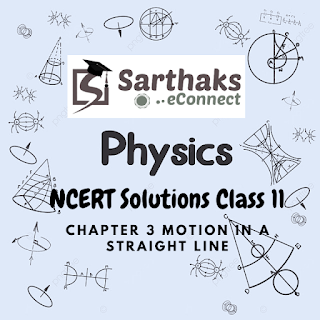NCERT Solutions Class 11 Physics Chapter 3 Motion in a Straight Line
Class 11 Physics NCERT Solutions Chapter 3 Motion in a Straight Line is the most effective way to learn about. To learn the fundamentals of this chapter, as well as to prepare for CBSE term 1 board exams and competitive exams such as JEE Mains, JEE Advance, Olympiad, NTSE, and others, consult our NCERT Solutions. These NCERT Solutions have been created by subject matter experts to provide an in-depth analysis of all of the concepts covered here. This study material is based on the most recent CBSE syllabus. In this NCERT Solutions Class 11, we discussed all types of NCERT exercise questions as well as intext questions.
- Motion in a straight line - A body is said to be in motion if its position changes with respect to time.
- Types of Rectilinear or linear motion
- Uniform linear motion with constant velocity
- Non-uniform linear motion with variable velocity.
- Uniform Motion in a Straight Line - When an object in a straight line covers an equal distance in an equal interval of time, the object is said to be in uniform motion in a straight line.
- Non-uniform Motion is a straight line - non-uniform motion occurs when a body travels an unequal interval distance in an unequal interval of time.
- Path length refers to the total length traversed by an object.
- Displacement is the shortest distance traveled by a body between its starting and ending points. It has an average speed.
- The average speed of an object is the total distance traveled divided by the total time taken.
- The velocity when the limit of the velocity is taken for an infinitesimal amount of time is referred to as instantaneous velocity.
- Average acceleration is defined as the rate of change of velocity per unit of time.



Comments
Post a Comment